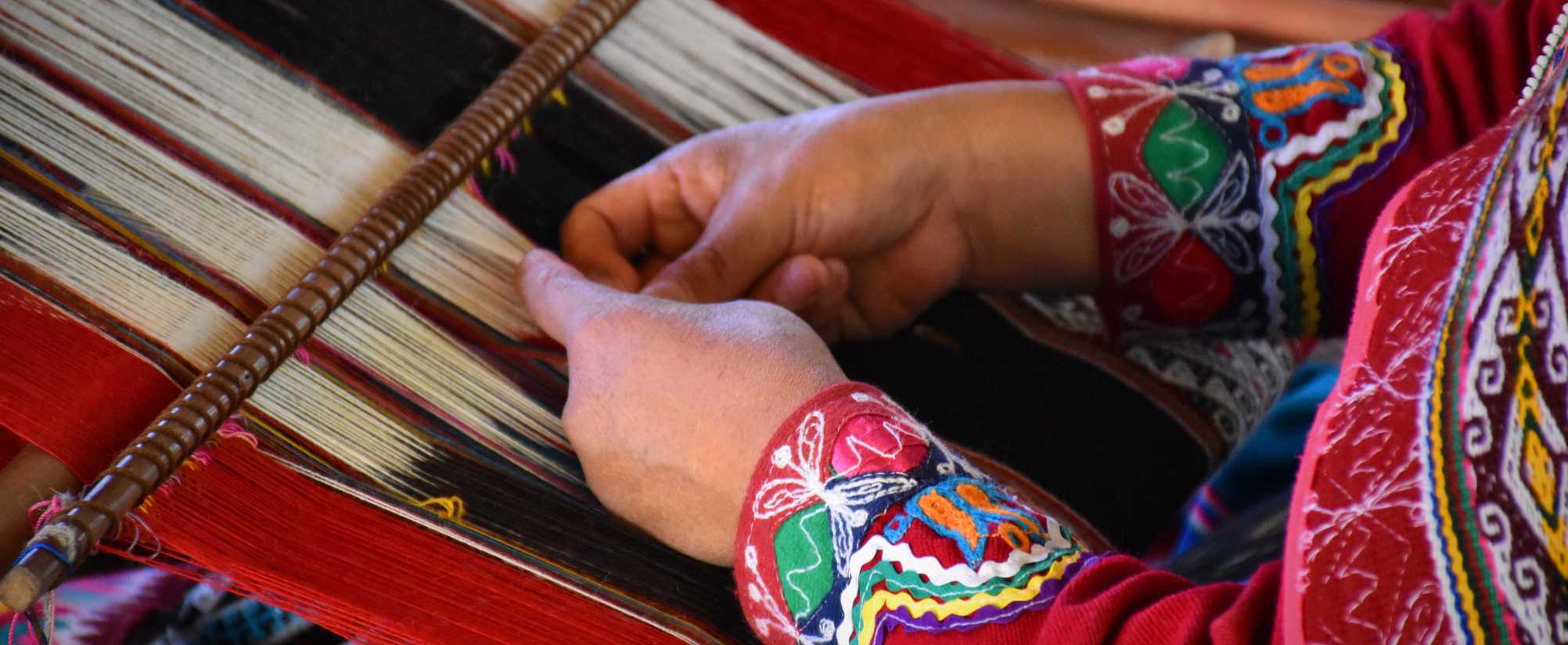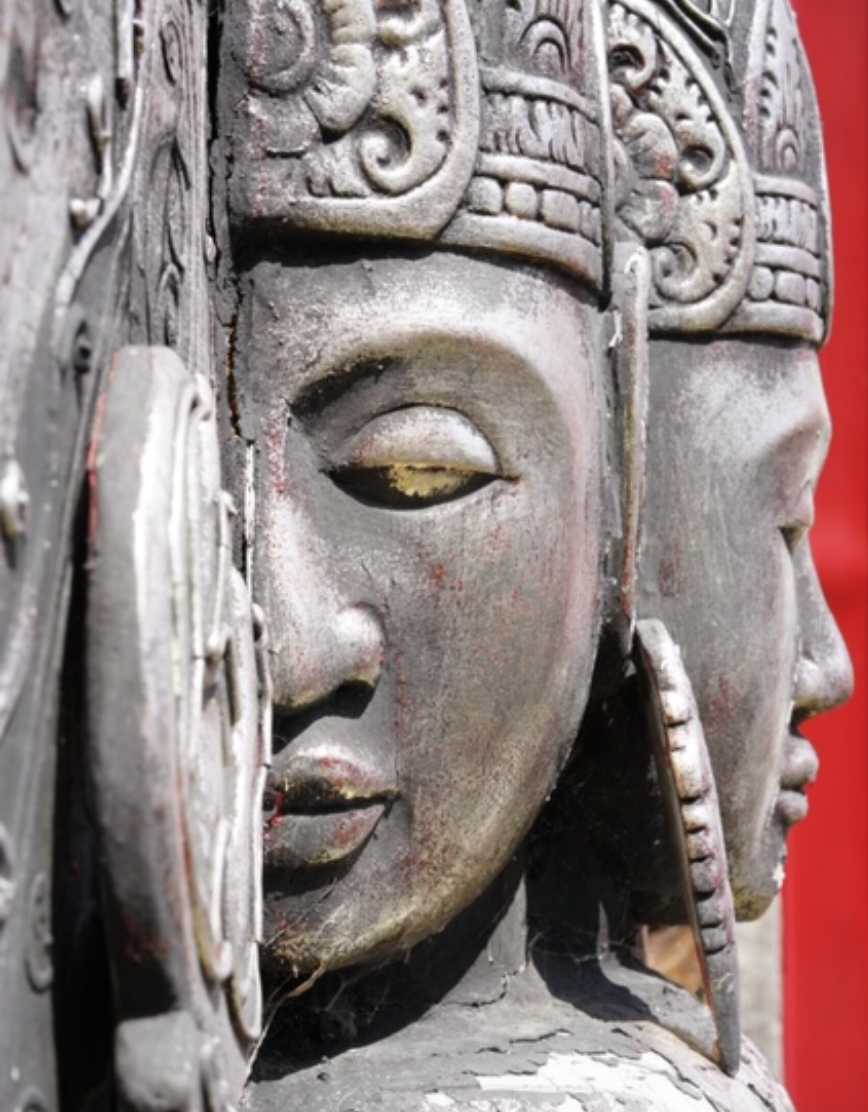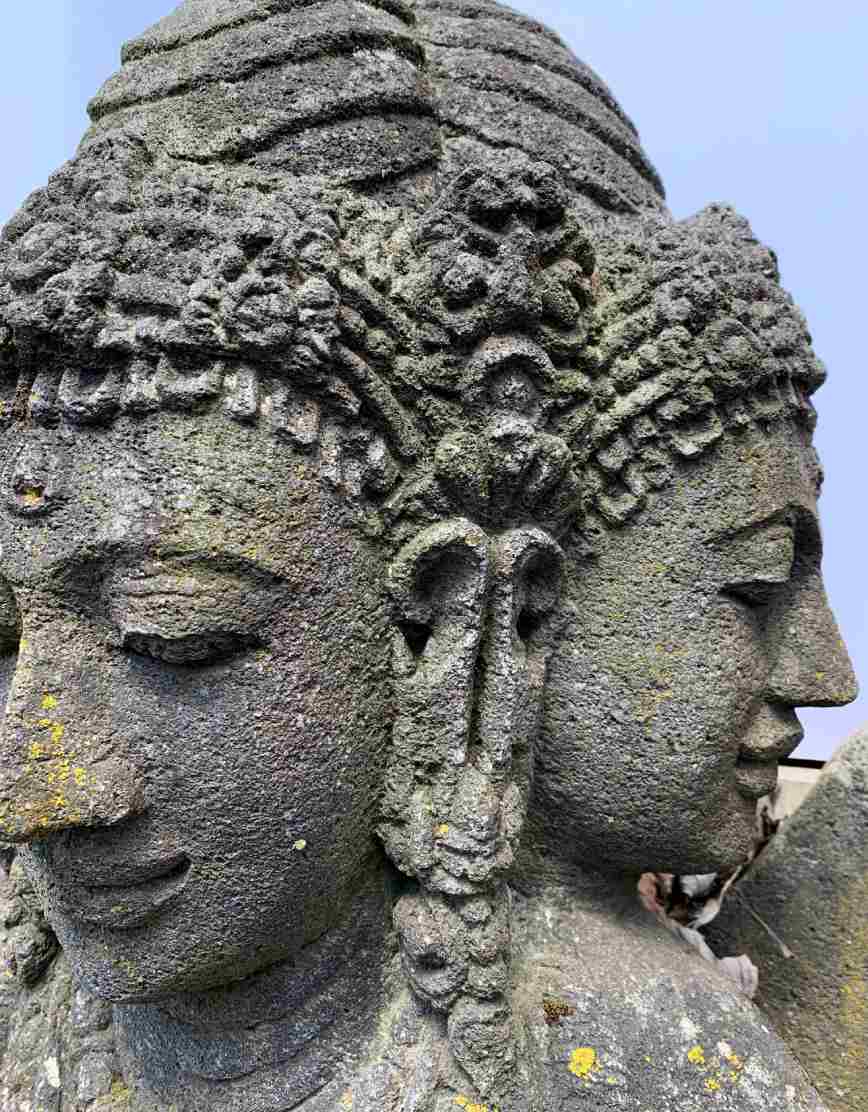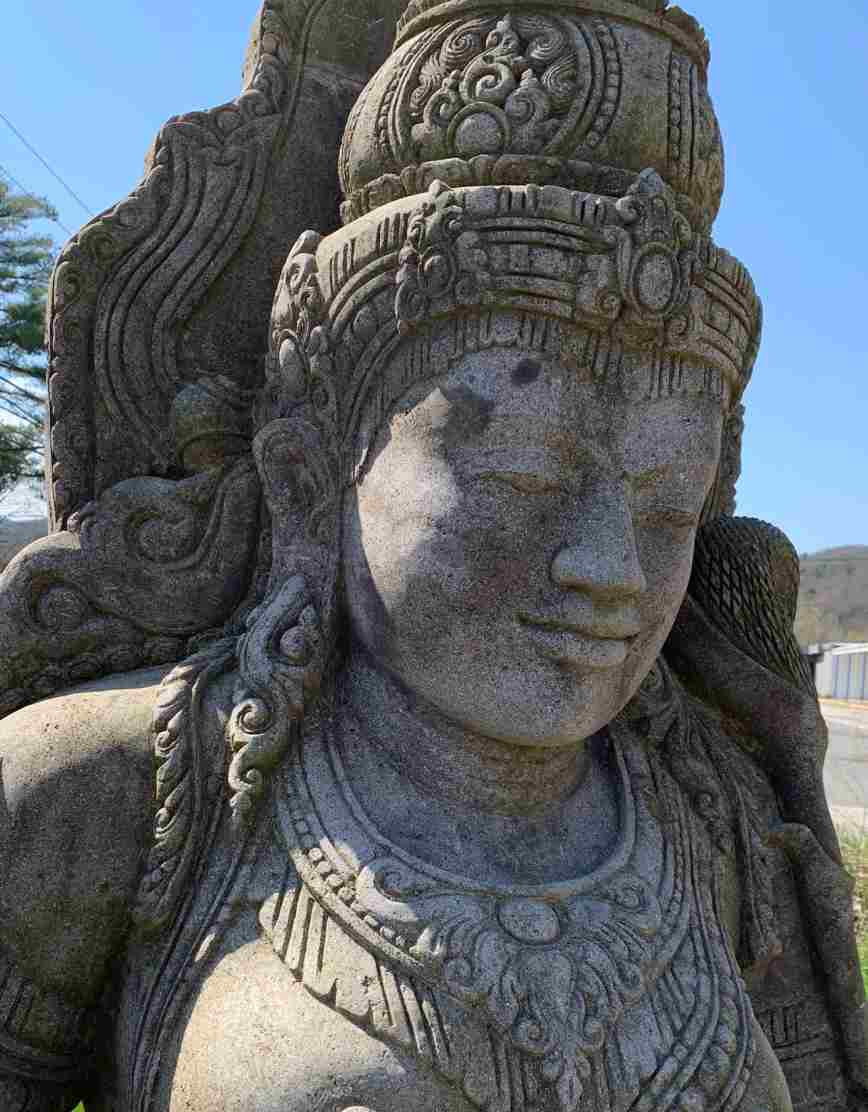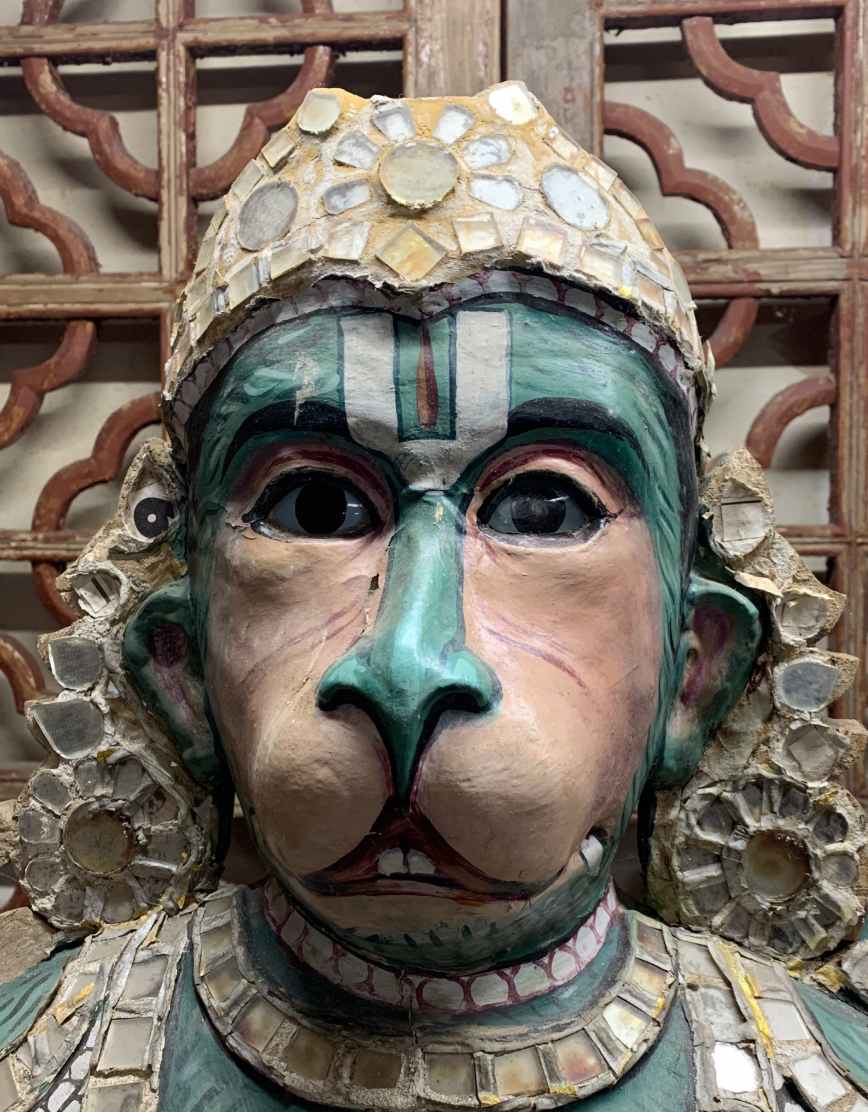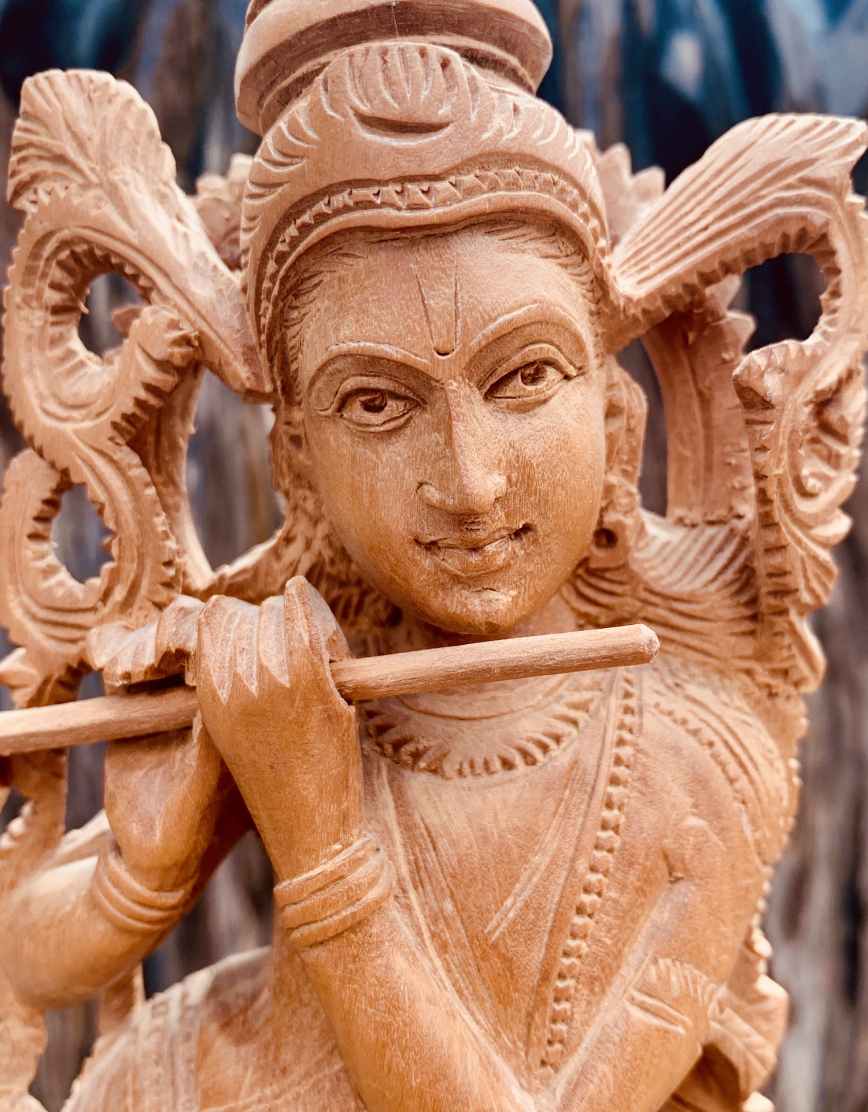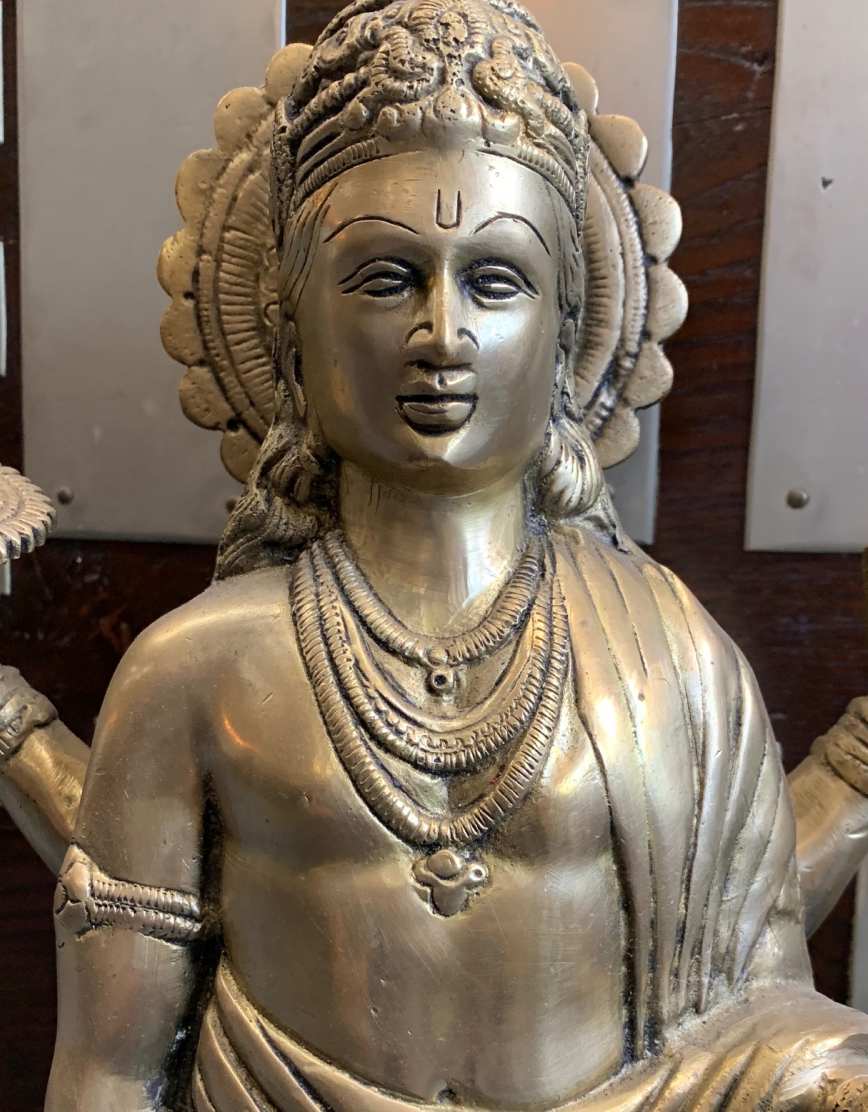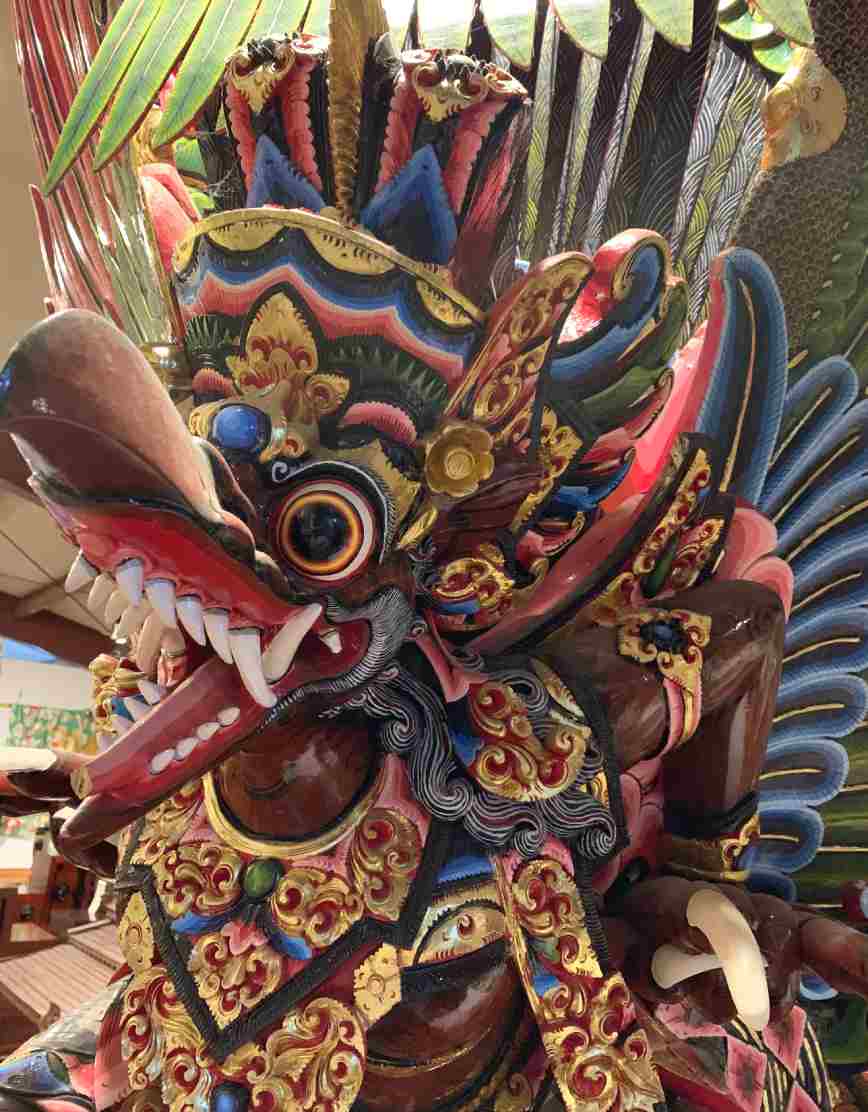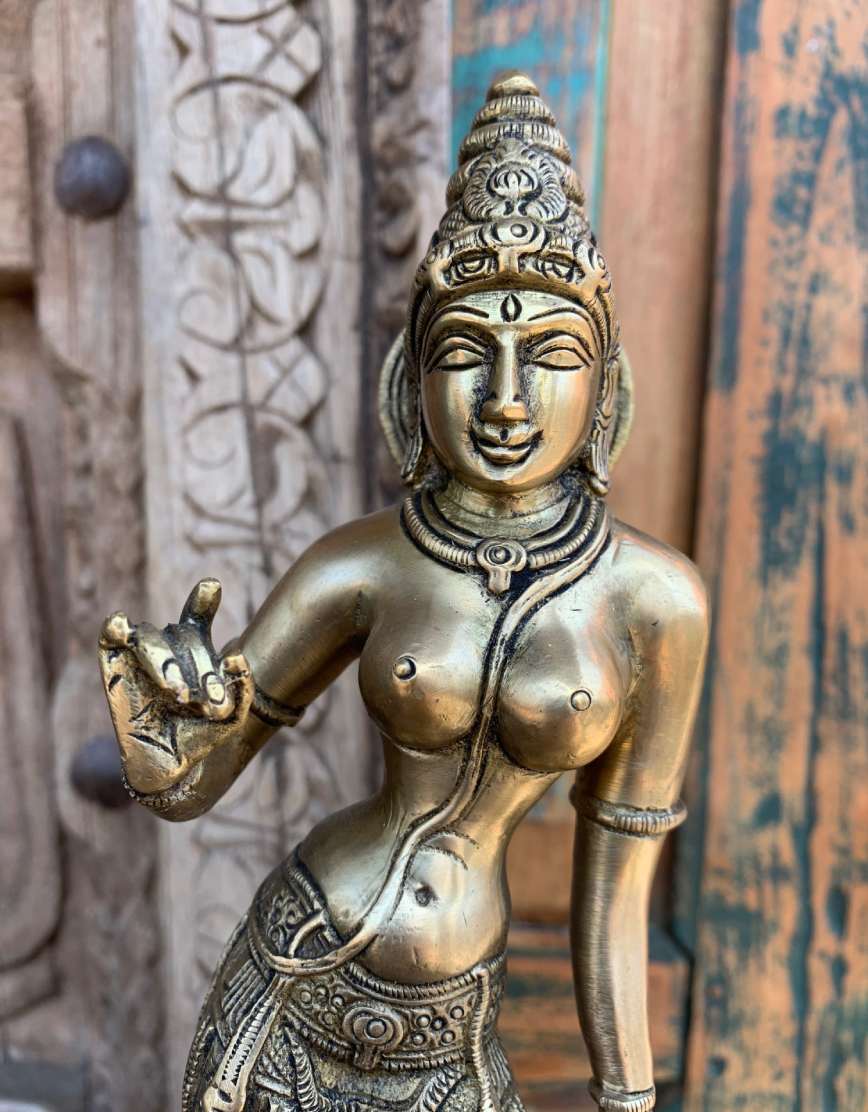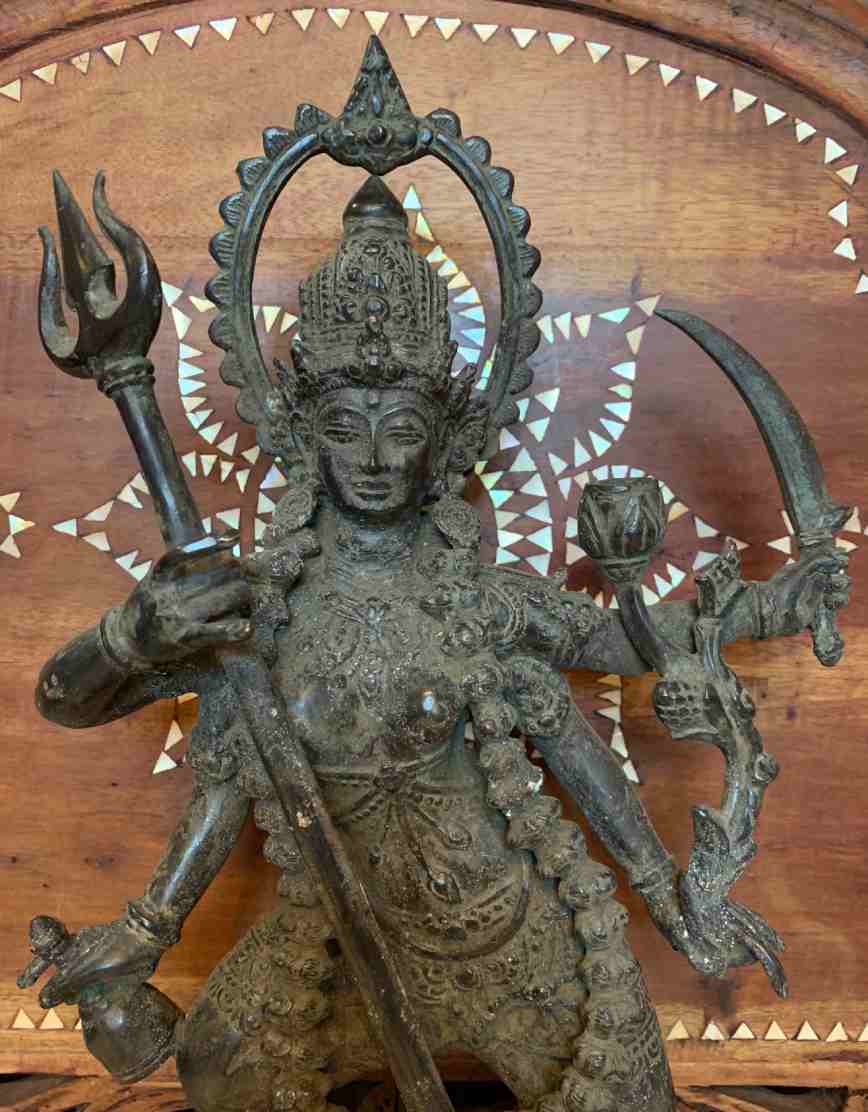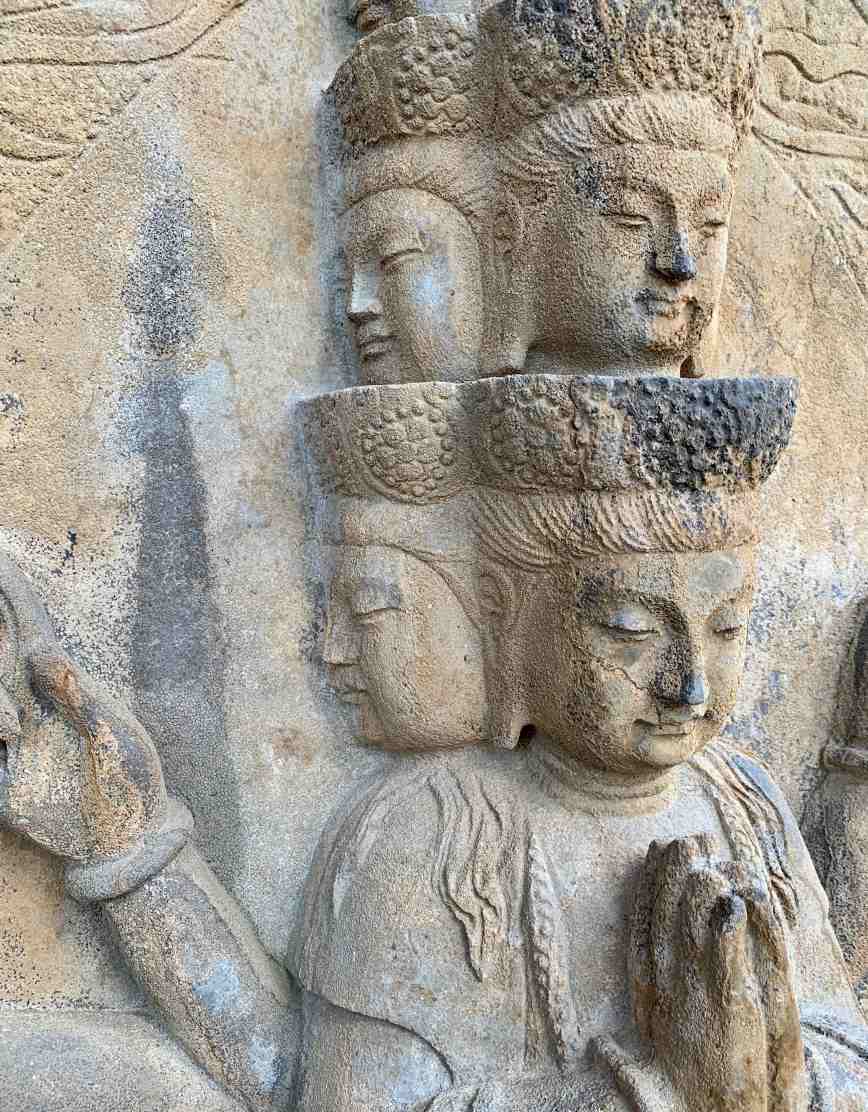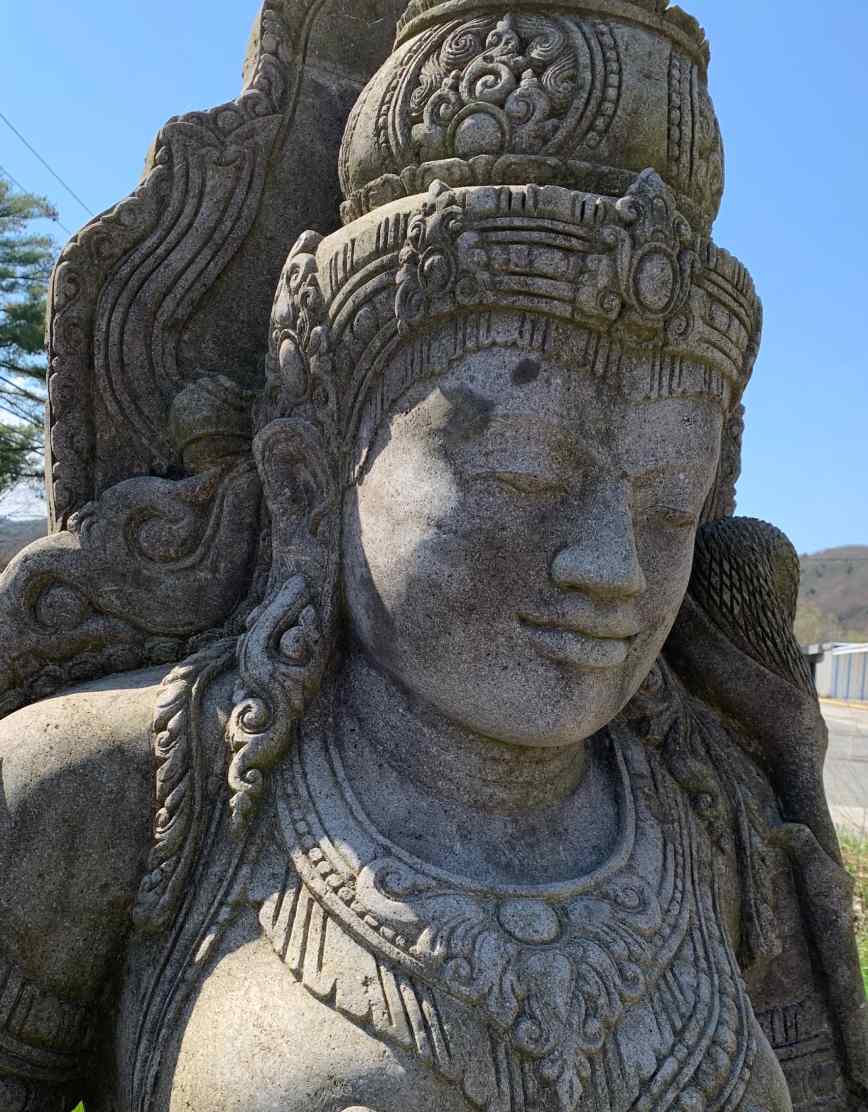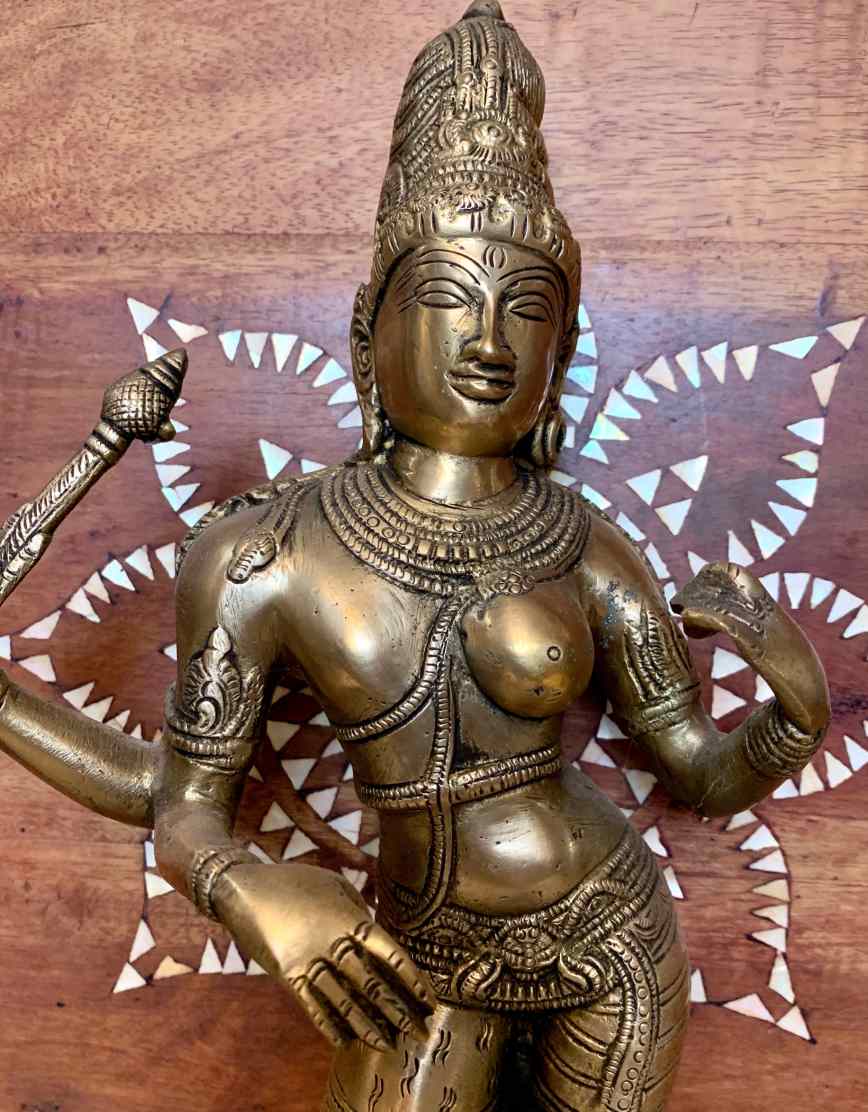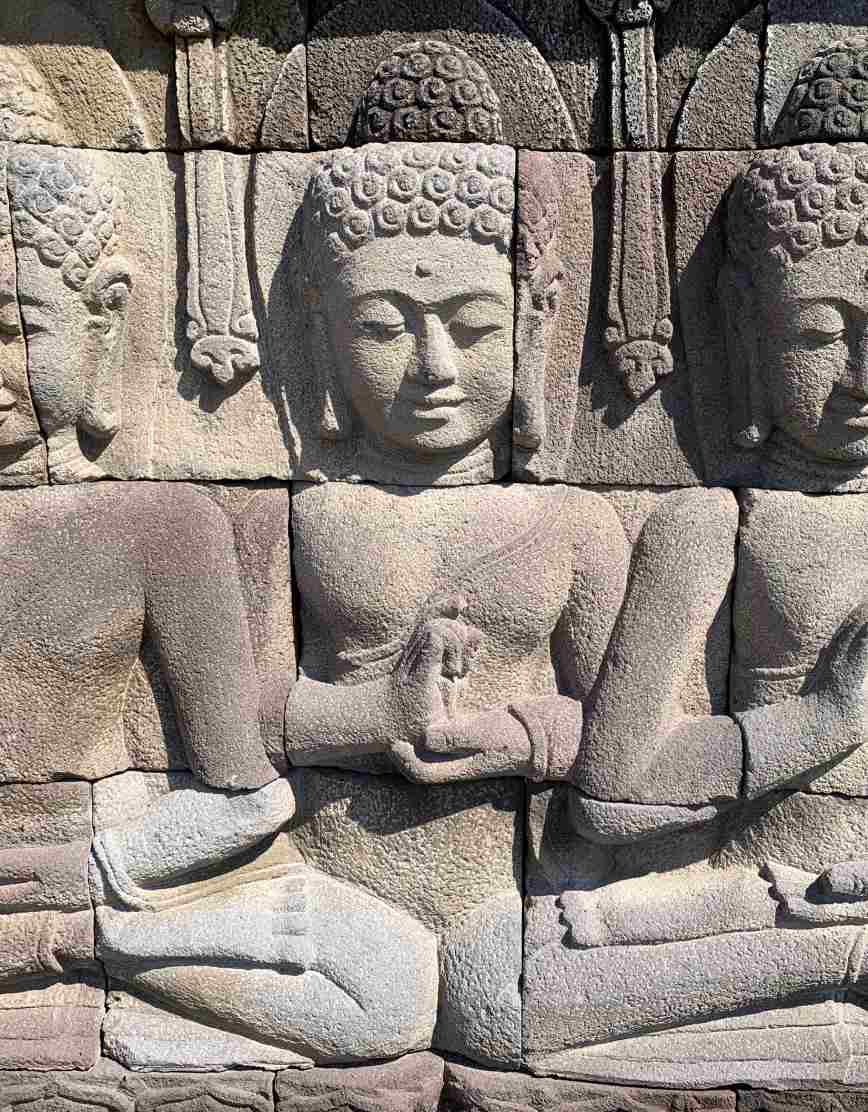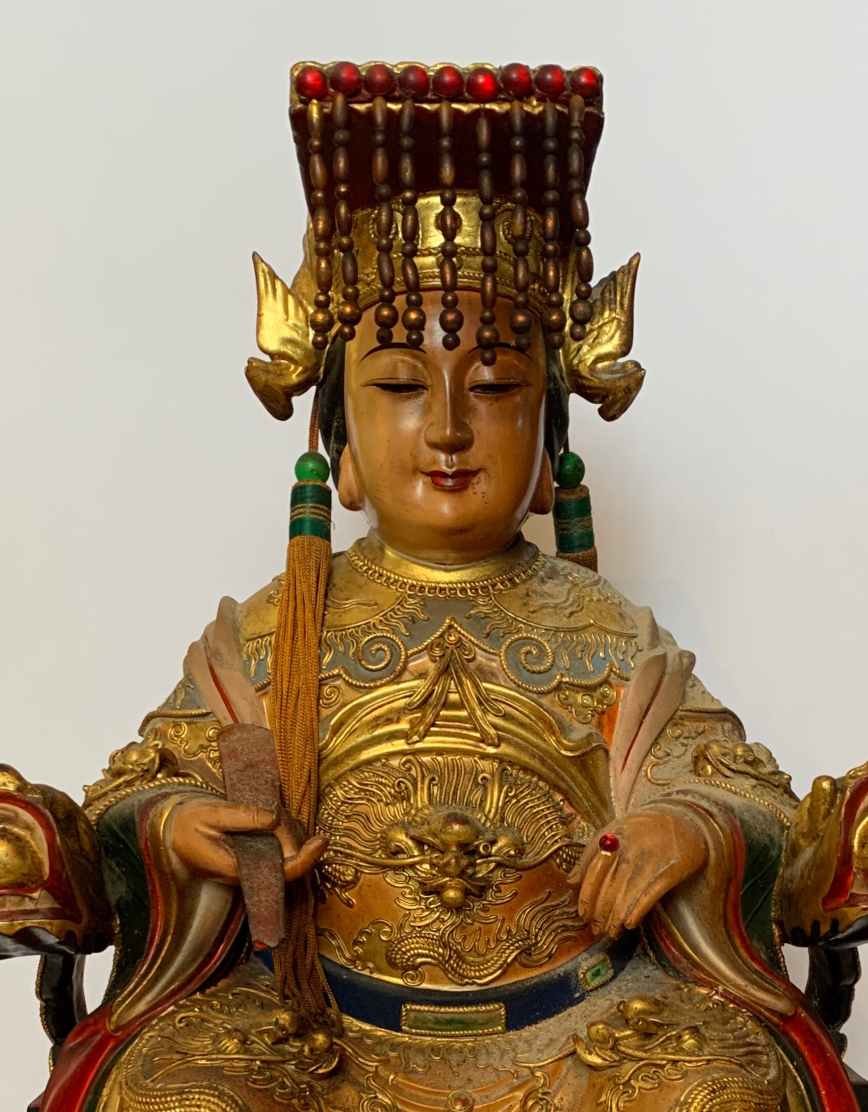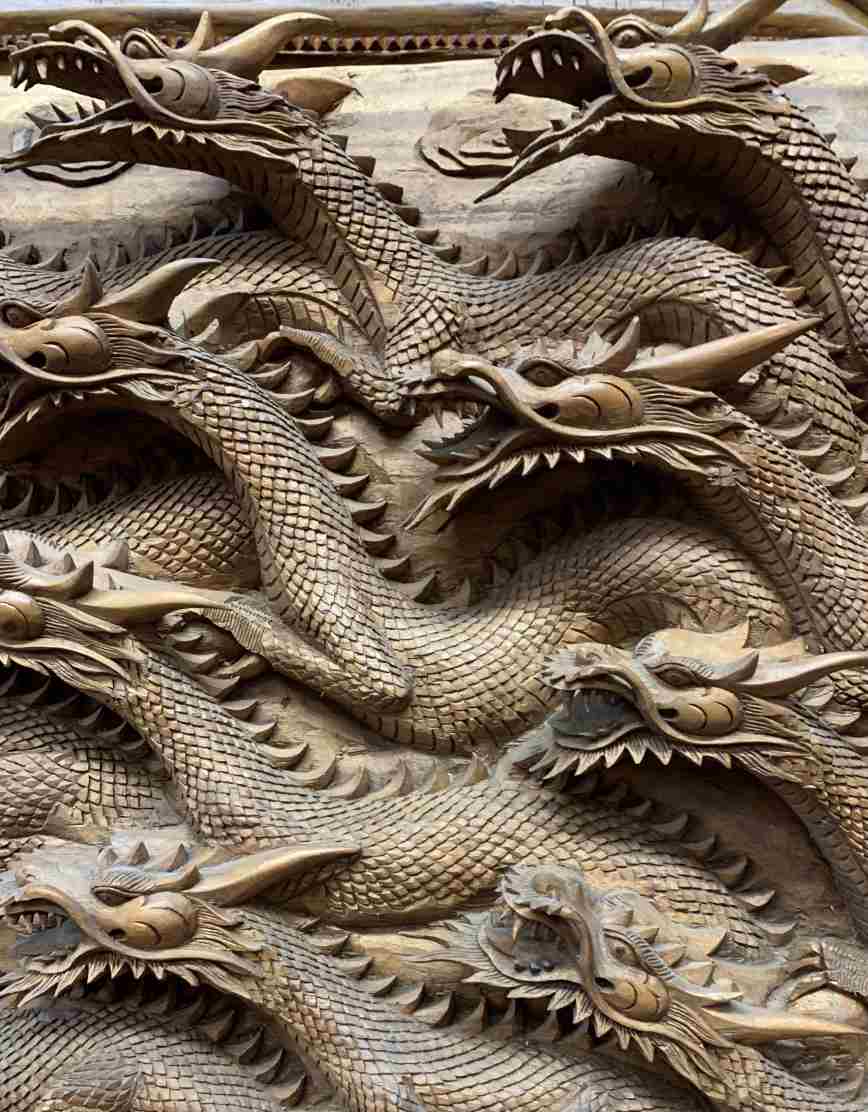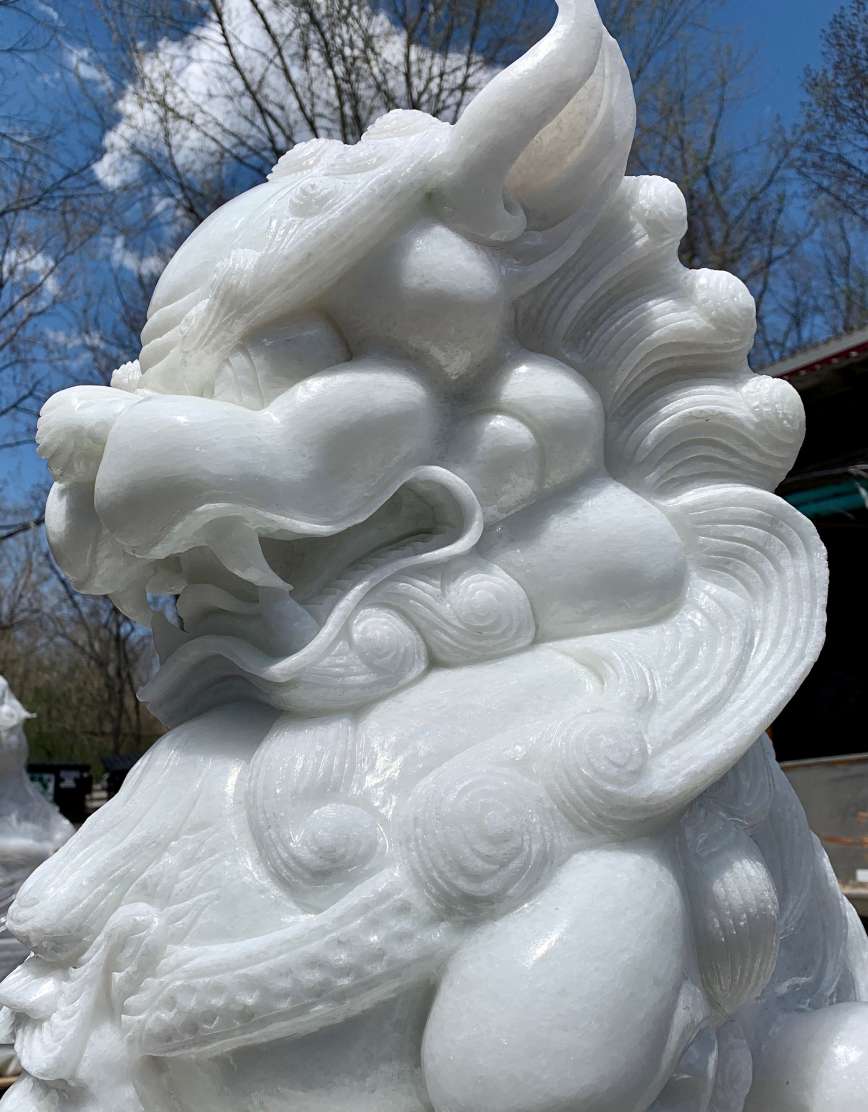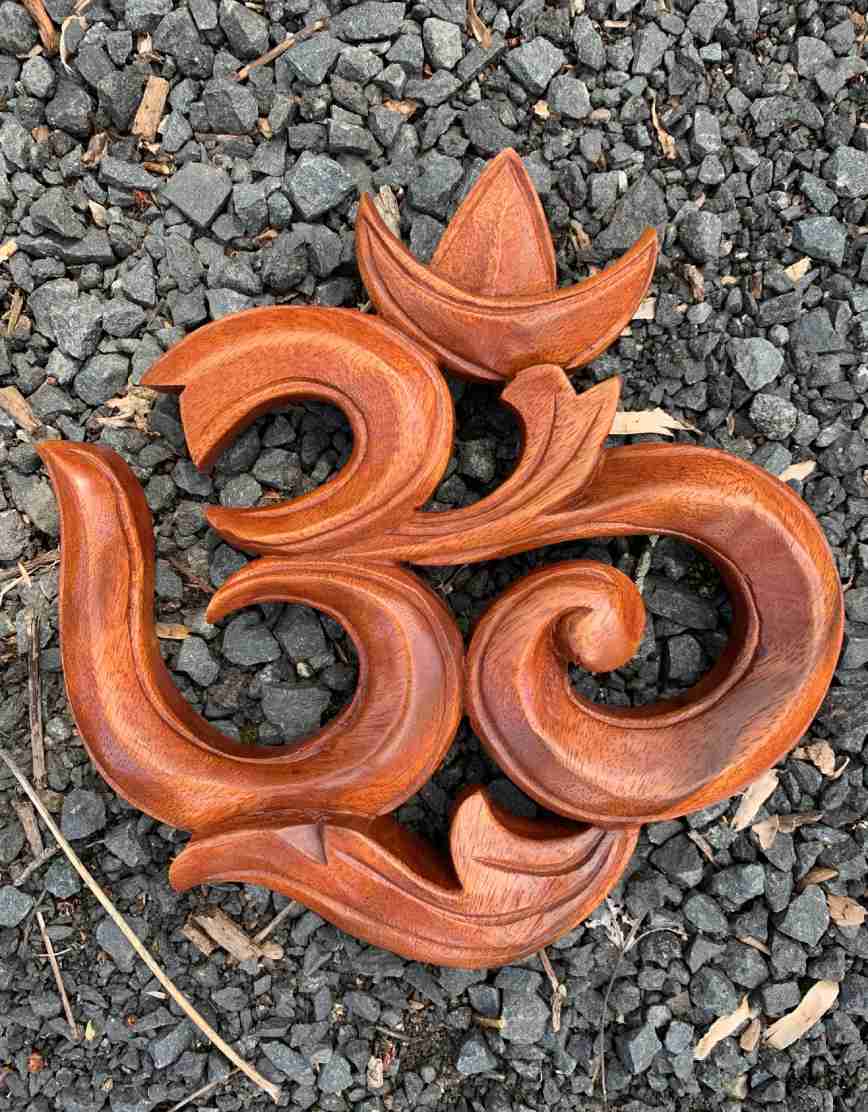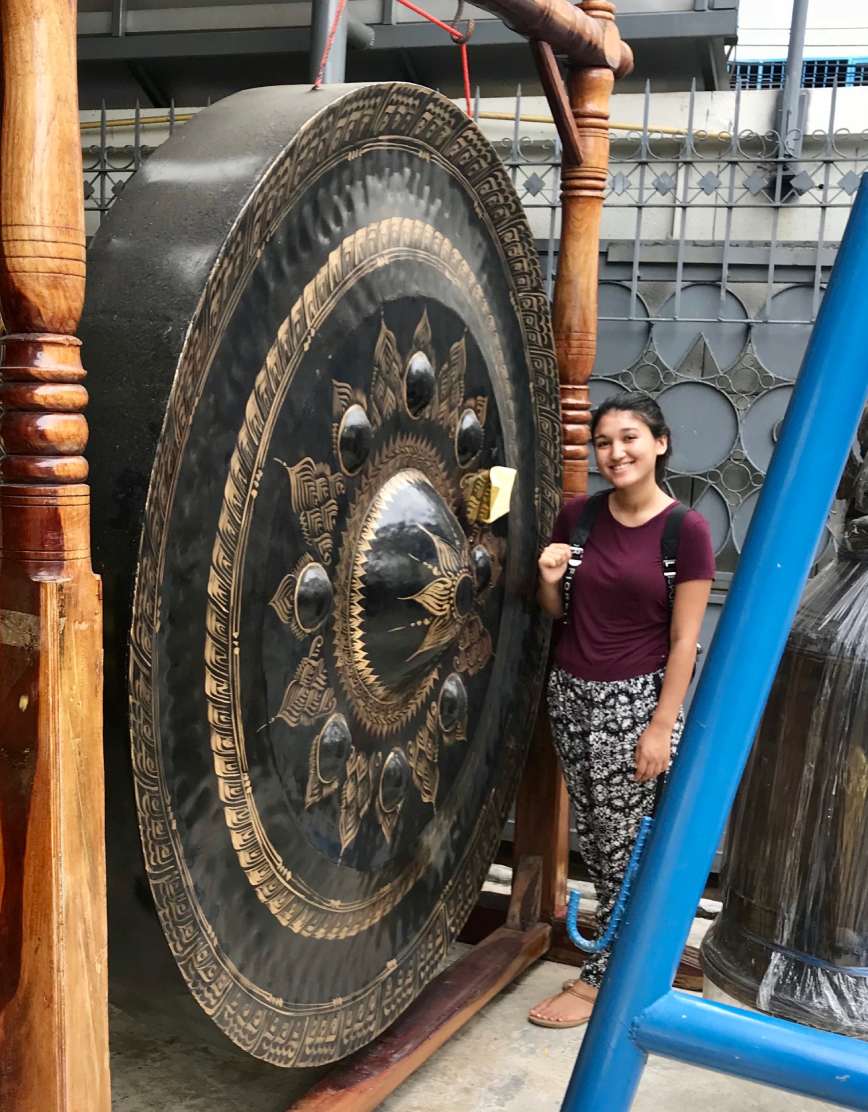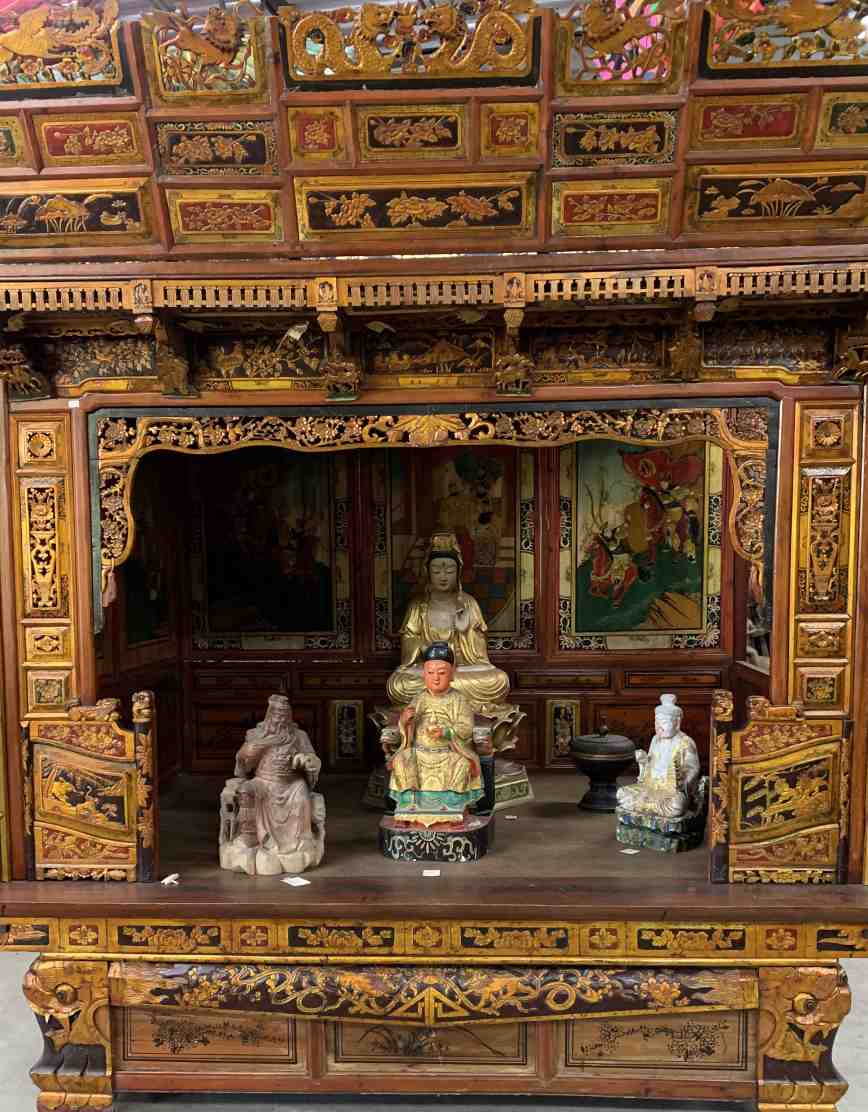Trimurti-Tridevi
Trimurti, literally “three faces”, is the holy trinity of divinity in Hinduism. This encompasses Brahma (the creator), Vishnu (the preserver) and Shiva (the destroyer) in one multi-faced avatar. Together, these gods are also referred to as ‘Dattatreya.’ The creator, sustainer (or maintainer), and destroyer represent the turning of the karmic wheel – destruction is imperative to creation, sustaining is reliant upon creation, and all that is sustained is eventually destroyed.
The Tridevi is a feminine counterpart of the Trimurti, and is comprised of three Goddesses who are consorts the three masculine figures in the Trimurti. Saraswati, the goddess of the arts and education is the consort of Brahma. Lakshmi, the goddess of abundance and wealth and purity, is the consort of Vishnu. Finally, Parvati, the feminine aspect of the universe, who is worshipped as the mother goddess (Shakti) of love, fertility, and destruction of evil.
Brahma
Brahma is the god of creation in Hinduism; He who breaths life into the universe. It is thus it is believed that he was self-born from a lotus flower. Brahma is depicted as having four faces, looking in all directions. Some believe that the four faces represent each of the 4 Vedic texts (the ancient texts of Hinduism). He is often depicted with red skin. Brahma has four arms and is often holding a holy water pot, a lotus, mala beads (Hindu prayer beads), and a book. HIs Consort is Saraswati, the goddess of education and the arts.
Shiva-Nataraj
Shiva’s roll is to destroy. While this may seem negative at first thought, it is actually destruction which allows the act of creation to begin anew. Most modern Hindus follow Shivaism, so Shiva forms the most powerful of the gods in the minds of most worshippers. In his many avatars, Shiva is the god of yoga, arts, and meditation. This has increased interest of him in the minds of Westerners who participate in these practices, which have spread in popularity all over the world.
One of Shiva’s most recognizable avatars is Nataraj, literally the “king of dance,” who is depicted as dancing in a ring of fire. In one hand he holds a flame, in another he often holds a drum (‘damaru’) from which emanates the rhythm of the beginning of the universe. This form of Shiva is usually portrayed doing the ‘dance of life’ (‘Tandavam’) atop the back of the demon of ignorance, who lays across a double lotus pedestal. AsiaBarong has many Nataraja statues in stock that may not be on the website – contact us for our current selection!
Vishnu
Vishnu is the sustainer of the universe. He is often depicted with blue skin, a symbol of his limitlessness. He usually holds a lotus, a mace, a conch shell, and a disc in his four hands. in the Hindu triad (Trimurti) that includes Brahma and Shiva. His powerful avatars are well represented in ancient Hindu stories, each avatar having been incarnated from Vishnu as a force of good and order sent to Earth when necessary to defeat evil. The exact number of avatars is debated and ranges from 10 to more than 24. The most well known of Vishnu’s avatars are Rama, the central character of the Ramayana, and Krishna of the Mahabharata.
Saraswati
Saraswati is the Hindu goddess of music, poetry, dance and education. She is a member of the female holy trinity, Tridevi. She is often depicted sitting atop a lotus flower, with her goose (‘Hamsa’) nearby, though she also is often shown riding atop her goose. Saraswati tends to be seen with her instrument (‘bina’ or ‘vina’) in her hands. Often, there is sculpture of her in front of schools and universities in the Hindu world – a symbol of the knowledge and wisdom.
Hanuman
Hanuman, the monkey god, is a symbol of strength and loyalty. A companion of Rama in the Hindu Ramayana story, he faithfully leads an army of monkeys to retrieve the beautiful goddess Sita from the demon/god Rawana who kidnapped her and brought her to the island of Lanka. Some iconic depictions of Hanuman include opening his chest to reveal his devotion to Rama and Sita, and kneeling down to present a Himalayan mountain to Rama after he was asked for some herbs from the mountain. Both of these classic poses are indicative of Hanuman’s undying loyalty to Lord Rama. Please contact to see our Hanuman collection.
Krishna
Krishna, an avatar of Vishnu, is a central and beloved god in Hinduism. Together with his consort Radha, the couple represent the embodiment of love in many Hindu stories; the symbols of tenderness and caring, the Romeo and Juliet of India. His complexion in paintings is often a shade of blue, which represents his limitlessness. Krishna also is often depicted at different stages of development, as a baby eating butter, a teenager surrounded by adoring women, a young man with his consort Radha, and driving a chariot accompanied by Lord Arjuna. He is also often depicted playing a flute (‘Bansuri’) symbolizing love and serenity while surrounded by animals and ‘Gopis’ (milkmaids). This playing of the flute is an expression of his undying love for Radha. Many one of a kind statues of Krishna and Radha with Krishna are at the AsiaBarong physical gallery in the Berkshires. Contact us for our current selections!
Dhanvantri
Dhanvantri is the god of traditional doctors in India, of Ayurvedic medicine, and a healer of the people. He is one of Vishnu’s many avatars, sent to Earth when the world is in need of healing. In his hands he holds the leech, the disc, a couch, and a pot of healing nectar. He is the doctor of all the gods, and is worshiped widely as the curer of any possible ailments.
Ganesh
Lord Ganesha is one of the mot easily recognizable and popular Hindu god throughout the world. Ganesh has the head of an elephant, though he is not an elephant. As the legend goes, Parvati (Shiva’s consort) created a boy, Ganesha, while Shiva was away to guard her privacy as she took a bath. When Shiva returned, he was outraged to find a boy who would not let him pass to see Parvati and cut off the boy’s head. Parvati, outraged, insisted Shiva heal the boy, so Shiva replaced the boy’s head with the head of an Elephant. Ganesha is known as the remover of obstacles in the lives of the people. He is also the patron of science, art, and for his wisdom and intellectual activities. Multiple statues of Ganesh which are not featured on the website are located at the AsiaBarong gallery in Western Massachusetts. Please contact us for current selections.
Garuda
Garuda means ‘eagle’ in many Indian and Indonesian languages. This reflects Garuda’s bird-like appearance. He is the steed of Lord Vishnu and is known as a a loyal servant and protector not only in Hinduism, but also in the Jain and Buddhist religions. Garuda doubles as the national emblem of the nations of Indonesia and Thailand, although the stylizations differ greatly. AsiaBarong owns an old stone compound – complete with temples -in a village famous for it’s Garuda carvings in Bali, Indonesia. At Asiabarong’s gallery in Massachusetts, we have many Garuda statues, the largest being a hand carved Garuda measuring about 10 feet in height.
Lakshmi - Laksmi
Lakshmi is the beautiful Hindu goddess of prosperity, both material and spiritual. Lakshmi is quite a popular goddess and is widely prayed to throughout India, as she is part of the “holy trinity,” Tridevi. Lakshmi is the consort to Vishnu. Often, her stickers or paintings of her footsteps placed on the outdoor stoop leading into the houses of worshippers in the hopes she will follow them with her abundance if wealth. She often is depicted sitting or standing atop a lotus flower while holding lotuses in the upper of two of her four arms. From her other hand, she showers golden coins on her worshippers. She is often surrounded by elephants with their trunks help upwards (a symbol of good fortune), and her vehicle, the owl.
Parvati
Parvati is the mother goddess of Hinduism and India, and is known her for love, beauty, fertility and strength. She is the omnipresent consort of Shiva and mother of Skanda and Ganesha, is renowned for her ability to fight demons as her avatar Kali. Parvati has many avatars, the most well-known of which include Durga and Kali.
Kali
Kali is the fearsome and fierce aspect of Parvati. She is also the leader of the Mahadevis, which includes goddesses from both Buddhism and Hinduism. She is deeply associated with the tantric arts and is known as the goddess of time. Kali is often depicted in a frightening pose, wearing a necklace of skulls and sticking her tongue out while standing on a sleeping Shiva’s chest. She is typically seen with dark blue or black skin, Please contact Asiabarong to see our full collection of Kali statues.
Avalokiteshvara
Avalokiteshvara is not a god, but a Buddhist bodhisattva. A bodhisattva, literally ‘enlightened being’ is a being who has reached enlightenment but who instead of going to nirvana, chooses to stay in the physical world and guide others down the path of enlightenment. Avalokiteshvara is a bodhisattva who encapsulates all the compassion of all Buddhas.
As Buddhism migrated in Asia, Avalokiteśvara has been represented as both both male and female. The goddesses Guan-Yin in China and Kannon in Japan are both derived from this male god. His female counterpart is Tara. In artistic depictions, Avalokiteshvara is recognizable by his 11 heads stacked high atop his body, looking in all directions to oversee all worldly beings.
Tara
Tara (literally “star” in Sanskrit) is the goddess of compassion in Hinduism, yet is also known in Tibetan Buddhism where she is regarded as a bodhisattva, or an enlightened being. Tara also appears in Jainism. Sculptures of Tara are often the most beautiful in the Hindu or Buddhist art. There are over 20 forms of Tara, however in Tibet, the main forms of the Goddess Tara are as follows:
1. Golden Tara: prosperity and wealth
2. Black Tara: power
3. White Tara: compassion
4. Red Tara: good fortune
5. Green Tara: protection from fear.
6. Blue Tara: the sublimation of base emotions
Durga
Durga is an avatar of the Hindu goddess Parvati. She is known as a protector for fights against evil and demonic forces on the side of Dharma. She has many arms, each of which hold a different weapon or symbolic object from which she can battle evil. Some of the items she holds include: a chakra (symbol of power), a sword, Trishul (trident), lotus bud, and a conch shell, among others. She is accompanied by her lion or tiger, a symbol of power.
Dewi Sri
Dewi Sri is the goddess of rice and fertility from native Indonesian religion. Though most of Indonesia is now largely Islamic (Bali is Hindu), Dewi Sri still remains a popular and important goddess who is still worshipped. In many ways, she is the mother goddess of the central Indonesian Island of Java, Bali, and Sumatra. She is often depicted with a rice bunch on her shoulder or in her hand. She represents fertility and the love of farms, the seas, and the people. She is thought to live in every rice paddy and every rice barn and daily offerings are given to her to ensure a good harvest.
Ardhanarishvara
Ardhanarishvara is a composite Hindu god depicted as both male and female. The god(ess) is an avatar of Shiva and Parvati together; Her right half is Shiva, and his left half is Parvati. Ardhanarishvara is the beautiful and perfect integration of the masculine and feminine components, symbolizing the inseparability of the genders.
Buddha
The historic Buddha, Siddhartha Gautama, was an entitled prince of a kingdom of India in the 5th century BCE. Due to experiences he had with the underprivileged when leaving the royal grounds as a young man, he renounced his privileged life and became enlightened. The term Buddha is a Sanskrit label meaning “Awakened one.” Thus, the word Buddha is a title. Siddhartha became a wandering teacher with a new philosophy in a Hindu land. His teachings were regarding moderation in all aspects of life. He preached a new view of perception of reality that quickly gained adherents and spread though much of Asia. AsiaBarong has an outstanding collection of Buddhas, please contact for info.
Guan Yin
Guan Yin is a Buddhist deity, more specifically, an omniscient Bodhisattva who is revered for her compassion, mercy, and kindness. A bodhisattva is a person who has attained enlightenment and a place in nirvana, but who instead chooses to stay and help the needy in our world. This is considered an act of ultimate sacrifice and compassion. Guan-Yin can hear the pleas for help in this world and will come to aid of those in need. She is widely worshipped in the Buddhist world. Often depicted holding an urn of holy water and a willow branch while standing in a flowing robe, she is the picture of a mother goddess.
Happy Buddha - Budai - Hotei
Patterned after a possibly historical Chinese Monk of the 10th century, Budai was a jolly, wandering, eccentric monk. Stories, myth, and legends arose around our wandering friend and he became part of the Chinese native religious pantheon of gods. He is part defied and part folkloric figure and widely loved. He is widely regarded as a god of prosperity, abundance, fertility and longevity. He is depicted with round stomach and sack filled with money, and sometimes is surrounded by children. He was introduced to Japan where is known as Hotei and is one of the seven gods. In the West, he is often referred to as ‘happy Buddha’, ‘fat Buddha’, or ‘laughing buddha’ due to is large belly, huge smile, and jolly demeanor.
Taoist Gods
There are literally hundreds of gods in Chinese folk religion – only some of whom are known to westerners. They are derived from many sources: early Chinese animism, defied generals and emperors, and even historical lay people involved in a major event, or who did an act of great compassion. Individual families and villages often have gods exclusive to just themselves. Taoism and Chinese folk religion is one of the world’s major non-proselytizing religions, with temples wherever there is a Chinese community. AsiaBarong has a major collection of these gods decommissioned from temples at our gallery in Western Massachusetts
Dragon
The importance of dragons as bringers of good luck and power cannot be understated in East and Southeast Asian culture.In East Asian folklore, dragons are viewed as auspicious creatures, often seen as deities associated with rainfall and bodies of water. They are seen as just, powerful, and benevolent spirits, despite their ferocious exterior, which helps them ward off evil.Asian Dragons have no wings and often are more serpent like than their western counterparts. In one claw they often hold a pearl – a symbol of long life and wealth. In some nations, they are they derived from the pair of Naga dragons which hold the world in Hinduism. As they relate to Buddhism, dragons are part of the serpent-like “Naga” family, and are said to have helped shield Buddha from the rain as he gained enlightenment.
Foo Dogs
This pair of lions or dogs is an imperial architectural element, traditionally placed on each side of the entrance gates of palaces and temples in China. They hold the place of gargoyles on western cathedrals as protectors of the edifice, scaring away demonic forces that might gather to enter. Later, they were adopted as ornaments at the entrances of villages, banks, and corporations, and are now popular as decor in front of the home. In Japan they are called shishi. They come in a mirrored pair, often in stone, including a female with a puppy under her paw, and a male with a pearl under his paw. AsiaBarong has an astounding collection at our campus, please ask for details.
Loro Blonyo
Loro Blonyo is a pair of male and female sculptures. They are traditionally given on the island of Java as a wedding gift to a newly married couple and are to be placed in the bridal bedroom. The couple are a symbol of a lasting committed loving relationship. The female of the pair is Dewi Sri, the goddess of rice and fertility. This is a classic wedding gift, perfect for any couple. We have many sizes and styles of Loro Bloyno, please contact us for our current selections.
Asian Instruments, Gongs, Gamelan
Asia holds a wonderful diversity of musical instruments tuned to the 7-and-5-note scales throughout the continent. A range of gongs and bells are used solely within the context of religious services and within temple settings. The ethnomusicology of Asia is astounding, complex, and diverse. Asiabarong carries a large quantity of gongs, singing bowls, stringed instruments (erhu, rebab, etc.), drums, and other instruments on our campus. We also can find any instrument from Asia via special order.
One notable ensemble is the Gamelan orchestra of the Javanese, Sundanese, and Balinese peoples of Indonesia. The orchestra is made up predominantly of percussive instruments. Gamelan is still commonly played on formal occasions and during most traditional Indonesian ceremonies. For Indonesians, gamelan is an integral part of Indonesian culture.
Chinese Beds
Given as a part of the bride’s dowry in tradition al China, the wedding bed was often the most highly ornamented and valuable piece in a dowry until 1911. The beds are highly designed, with walls and sometimes even an entrance area with a floor. Motifs on most beds represent marital and spiritual harmony, fertility, and longevity. Not surprisingly, the level of carving and gilding on the bed showed a great deal about the family’s status in society. Asiabarong has a large collection of these beds and is happy to send you photos. Most of the canopy beds we have are antiques. Some you can still see carving such as 鸞鳳和鳴, (LUAN FENG HE MING), meaning ‘the phoenixes are singing in harmony as a reminder for the married couple to stay happily together forever.’ Please call us for information and photos.

